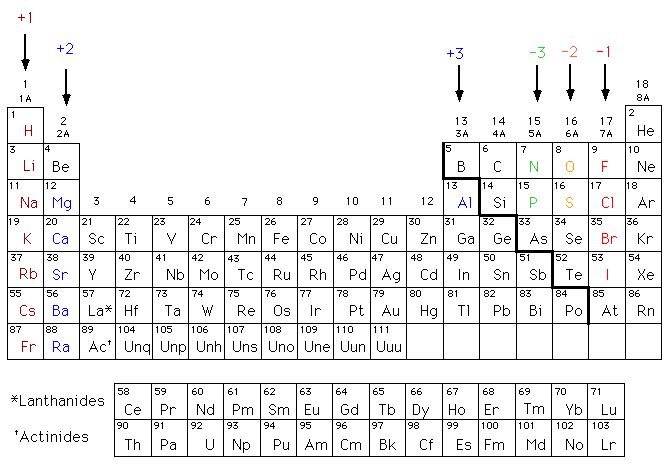
Achieving a Noble Gas Electron Configuration
For reasons we will discuss later, elements react until the element achieves an electron configuration of a noble gas.
Elements can achieve a noble gas electron configuration three ways.
- An element can give up electrons to achieve the electron configuration of the next lowest noble gas.
- An element can attract additional electrons to achieve the electron configuration of the next highest noble gas.
- Two (or more elements) can share electrons so that each attains the electron configuration of the nearest noble gas.

The alkali metals will lose an electron to resemble the next lowest noble gas; thus, all the alkali metals form +1 ions.
K loses an electron so that it will have the same electron configuration as Ne. Since K loses one electron (1 negative charge) it is no longer neutral; it now has a +1 charge.
The alkali earth metals (group 2), such as, Mg or Sr lose two e-'s to attain the configuration of Ne. Thus, the group 2 metals tend to have a +2 charge.
On the other side of the periodic table elements gain electrons to resemble the next higher noble gas. F gains 1 e- and O gains 2 e-'s, and O gain e-'s to attain the configuration of Ne; thus, the halogens tend to -1 charges and the oxygen family tends to a -2 charge.